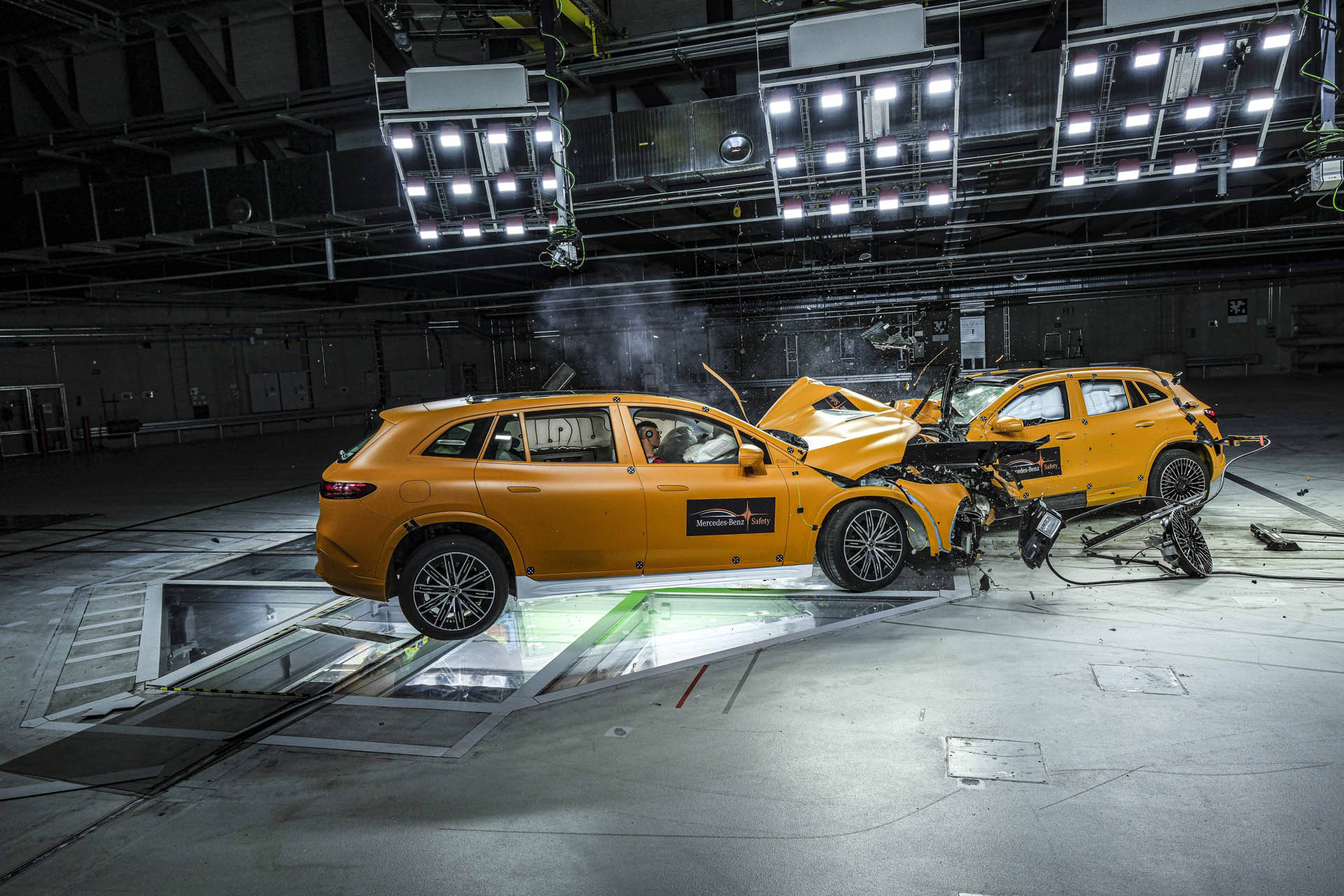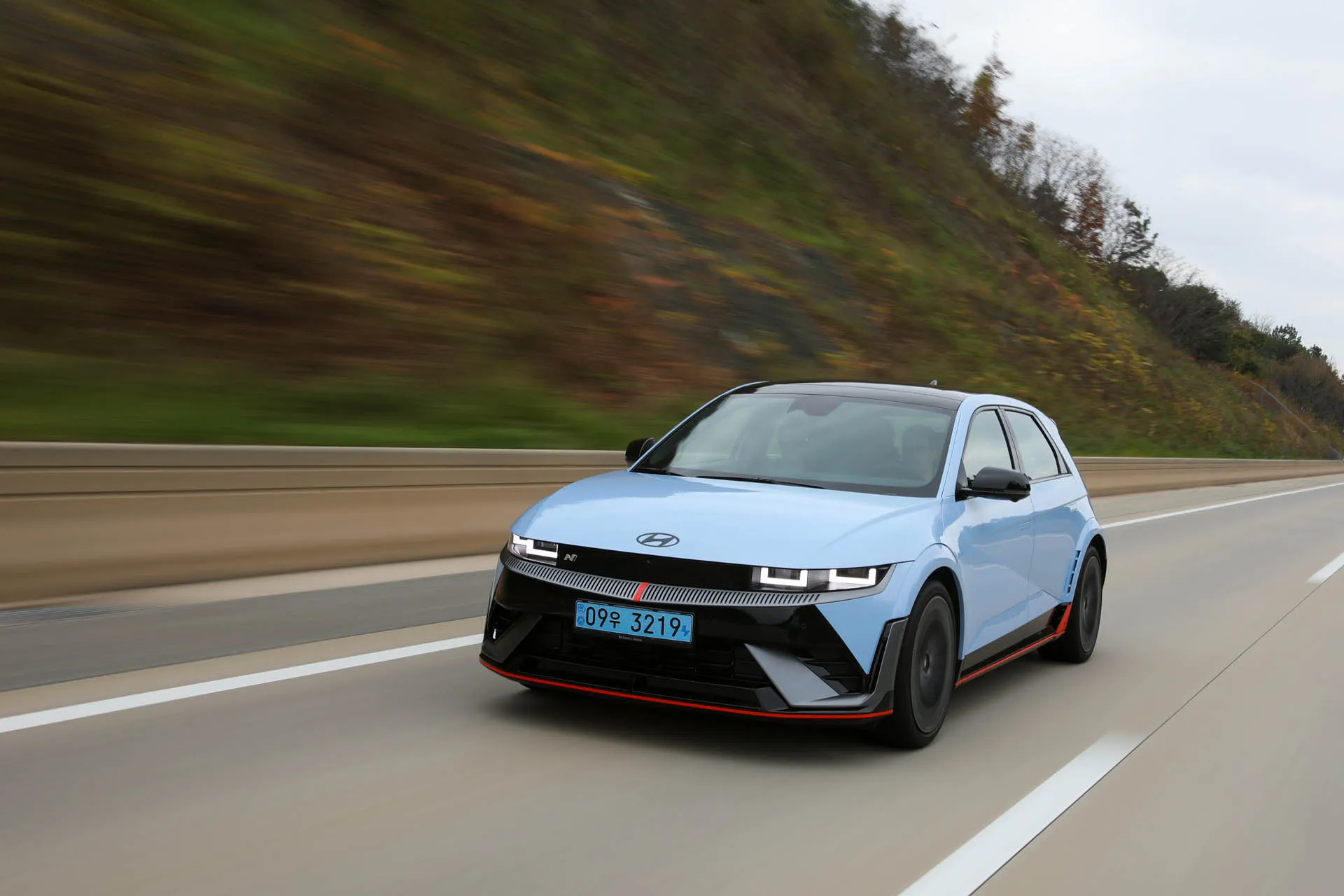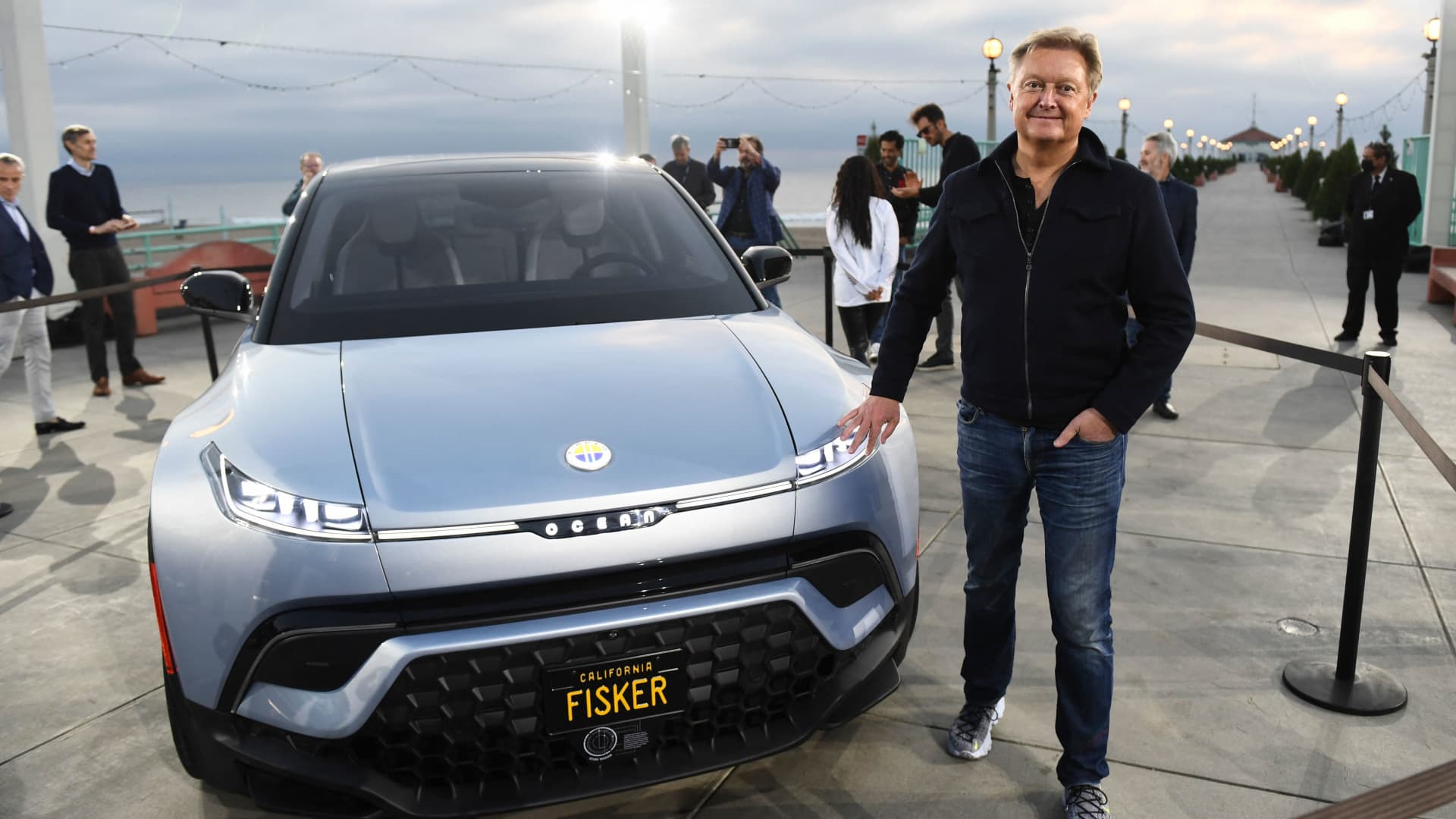Mercedes-Benz envisions a future with zero car crashes, and its goal is to reach that milestone by 2050. It’s a tall order.
On Tuesday, the automaker took the next steps toward that future as it performed the first known crash test between two electric vehicles in front of journalists. It was loud and violent, exactly as expected.
Mercedes-Benz EQS SUV and EQA crash test
Crash-testing electric cars
A crash test seems counterintuitive to a future without car crashes, but the accident-free future is far away. This test pieced together what might happen on the way to zero accidents.
The crash test, which was between an EQS SUV and EQA crossover SUV, was a head-on with 50% frontal overlap, and with both cars traveling at 35 mph (56 kph). Notably, this scenario exceeds any standardized crash test by agencies responsible for rating vehicle safety.
While the vehicles were both totaled, the passenger cells and high-voltage battery packs were both fully intact. In other words, the vehicles performed no worse, and were no less safe, than a gas-powered Mercedes.
Mercedes planned to do a roof-crush test the next day by dropping the crashed EQS on its roof, as only the front end sustained damage during the current test.
The crash marked the automaker’s next step in crash testing with the electric future coming online.
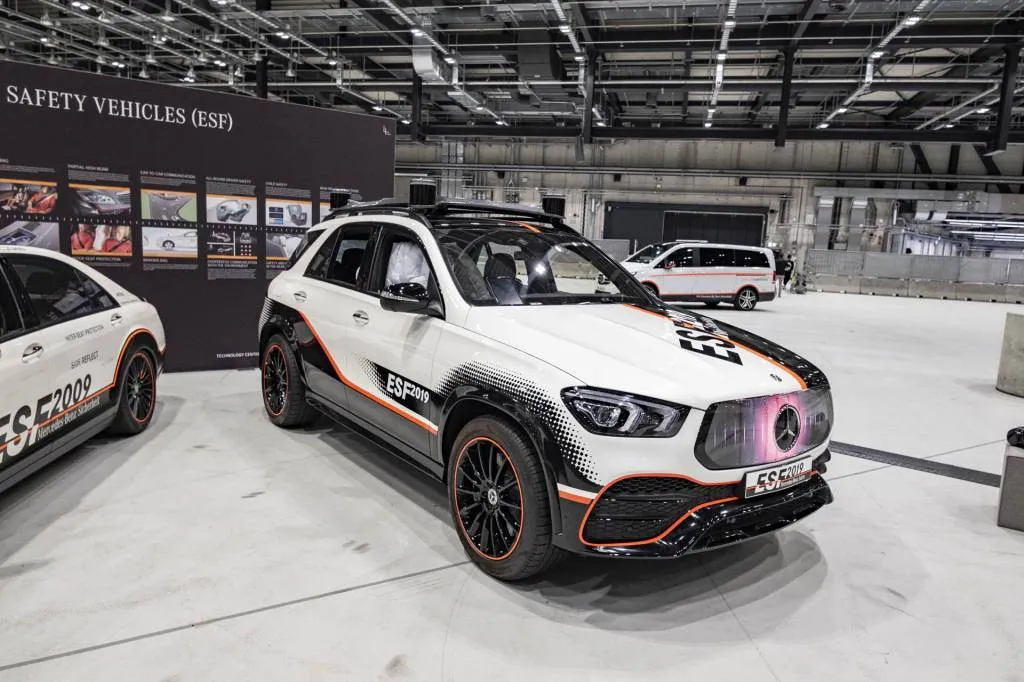
Mercedes-Benz ESF vehicles
A future without crashes?
Minimizing crashes to zero is the goal, but the reality is uncertain.
Director of Vehicle Safety at Mercedes-Benz Paul Dick said today there are 1.3 million road fatalities each year worldwide. That equates to 12 large planes full of people every single day. Mercedes is aiming for none of its vehicles to be involved in an accident by 2050 according to Dick, but that might not be possible.
Julien Richert is in charge of Mercedes-Benz’s ESF program, which creates Experimental Safety Vehicles that explore new designs and technology in the name of safety. Richert told Motor Authority as long as we live in a world of mixed vehicles (referring to human-driven vehicles and autonomous vehicles) there will be uncontrolled variables that lead to accidents. Even in an autonomous world there are uncontrolled and unavoidable issues such as a falling tree limb, Richert noted.
Future vehicles will need to communicate with the outside environment, both in terms of pedestrians and other drivers. For now, that will take the form of teal-colored lighting elements on Mercedes Drive Pilot vehicles while operating in autonomous mode. In the future, it could be windows that display graphics or even a live image feed.
In preparation for an autonomous future the Mercedes-Benz ESF 2019 concept employed most of these possible features. It also took into account a different seating position for autonomous driving, which saw the seatbelt move to the seat itself rather than being pillar-mounted as with most of today’s vehicles.
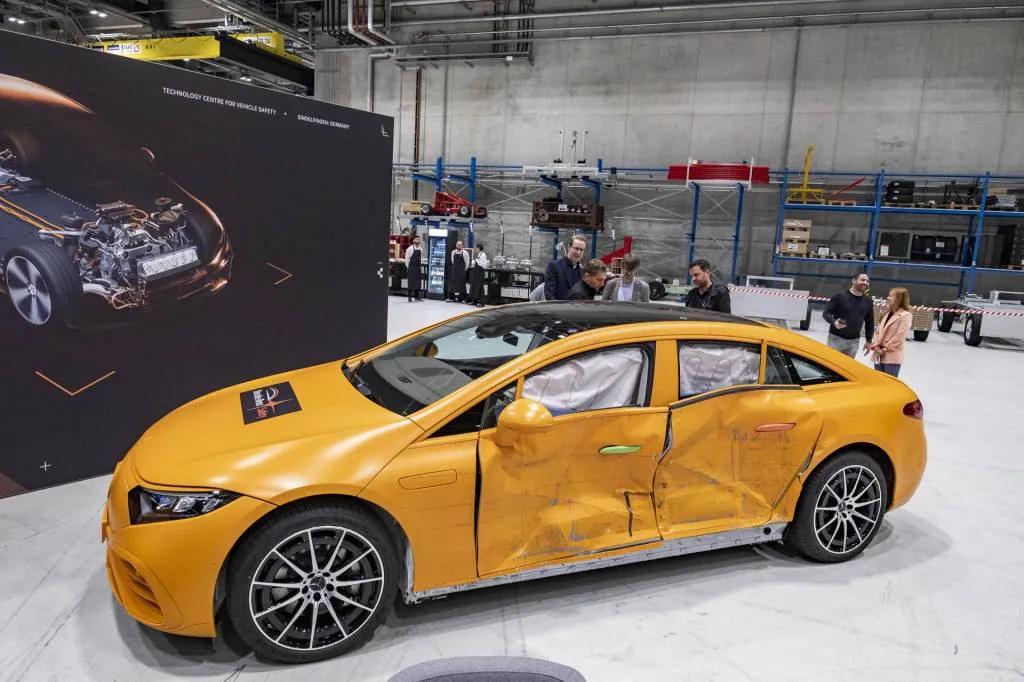
Crashed Mercedes-Benz EQS
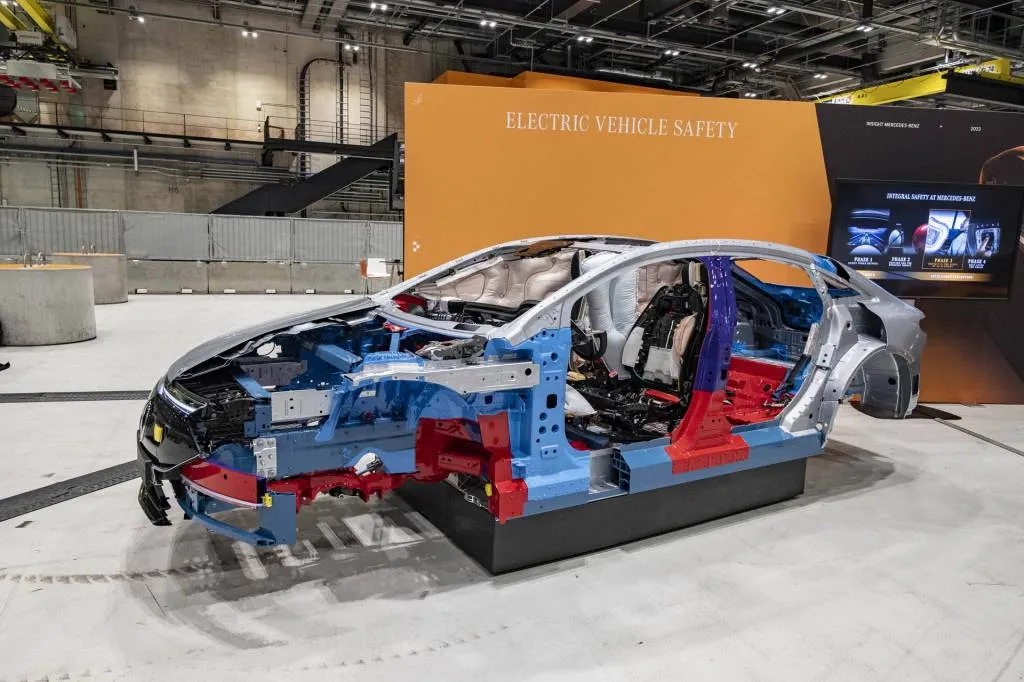
Mercedes-Benz EQS safety body
Handling crash situations today
Today, regardless of powertrain, Mercedes is handling safety measures in four phases.
Phase 1 is the assistance phase, and it utilizes active safety technology such as adaptive cruise control, blind-spot monitors, automatic emergency braking, and the hands-free autonomous Drive Pilot system.
Phase 2 is the preparation phase, which activates when the vehicle’s sensors become aware a crash will take place. The windows roll up, seatbelt tensioners tighten, airbags pre-charge in anticipation of deployment, and if equipped with air or hydraulic suspension, the vehicle will actually lift the side about to experience impact to raise and move occupants away from the energy force.
Phase 3 is the protect phase, and it involves all the airbags deploying inside the vehicle. The 2021 S-Class saw the introduction of a rear airbag mounted on the front seat backs for rear seat passengers. That concept was introduced in the ESF 2019 concept and then put into production.
Phase 4 is the help phase, and it’s when the system kicks in to alert those near and far that a vehicle’s been in an accident. The hazard lights automatically illuminate, on an electric vehicle the high-voltage electrical system will automatically go into an emergency shut-down mode, and the vehicle will call an emergency call center where an operator will pickup speaking the default language you’ve chosen in your Mercedes-Benz.
All Mercedes-Benz vehicles feature a black box (which is actually yellow) mounted at the center most point of the vehicle. It acts as the vehicle’s brain for all safety systems and Mercedes can retrieve crash data from it after the fact should it be needed.
Today, Mercedes makes both gas- and electric-powered vehicles. With the most recent crash test the automaker has taken the next step in safety testing as it prepares its electric lineup while looking toward a crashless future.
https://www.motorauthority.com/news/1141103_mercedes-crashes-two-electric-cars-eyes-accident-free-future Mercedes crashes two electric cars, eyes accident-free future



